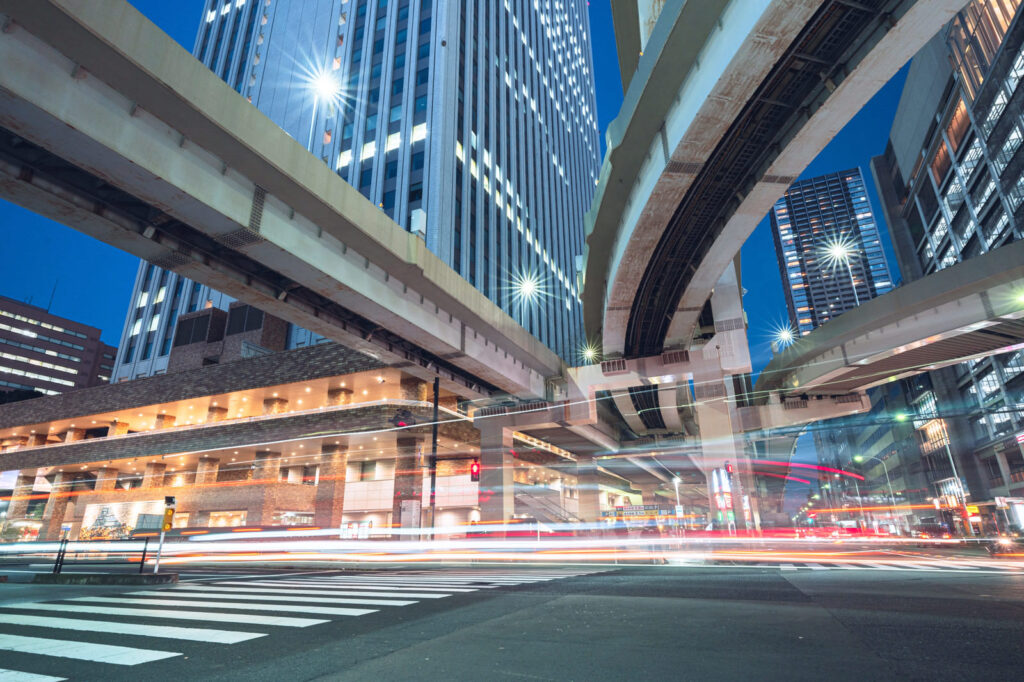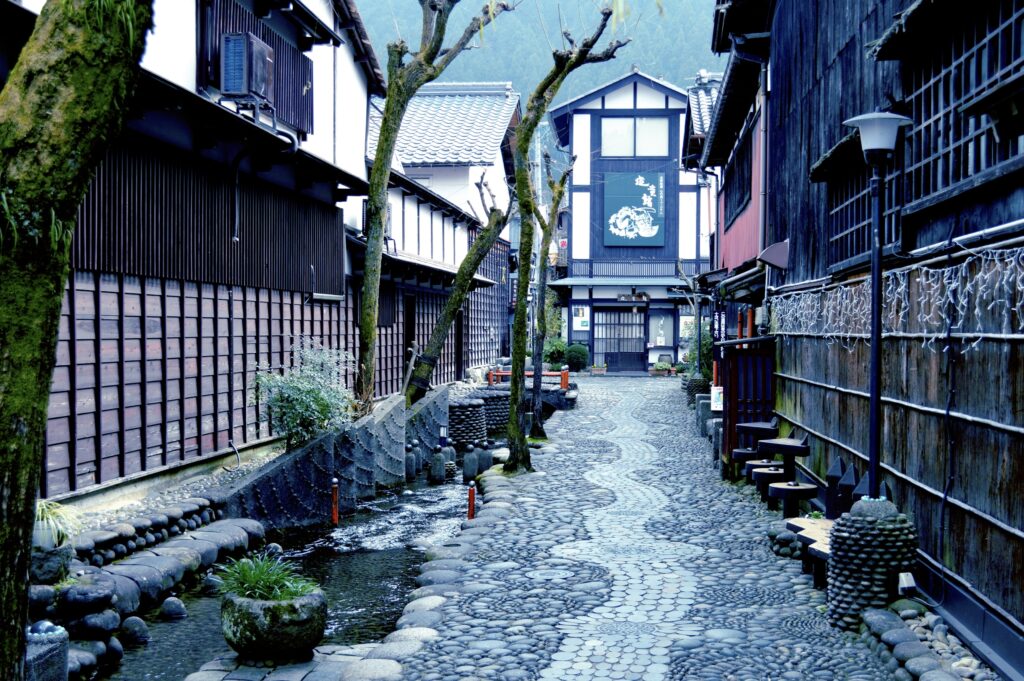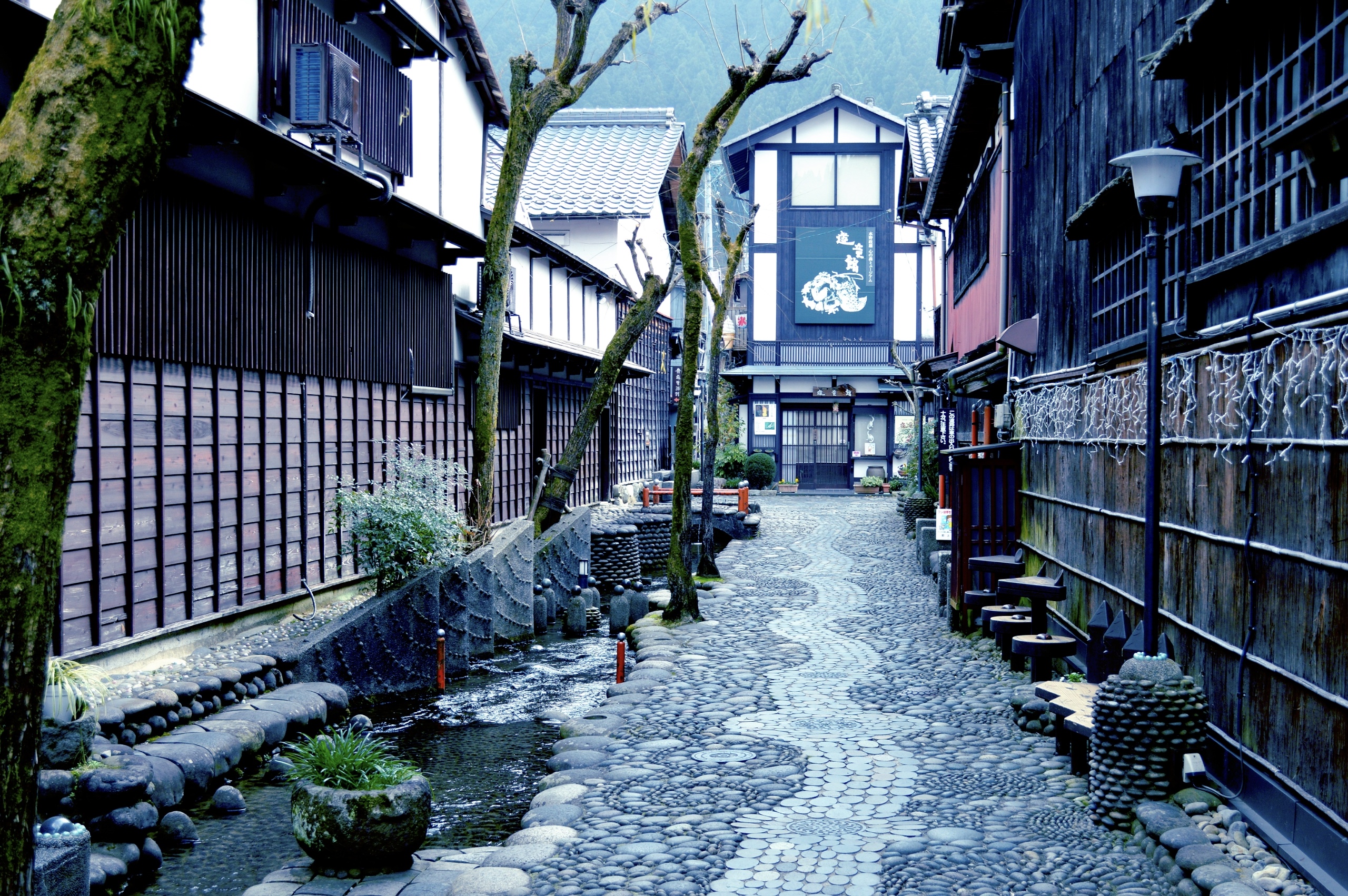Anime has the incredible ability to transport viewers to fantastical worlds, but did you know that many of these captivating settings are inspired by real places in Japan?
In this blog post, we’ll embark on a virtual journey to discover some iconic spots that have served as the backdrop for beloved anime series.
Exploring Anime-Inspired Japan: Must-Visit Spots for Fans
Ikebukuro – The Dynamic Setting of “Durarara!!”

Ikebukuro, a major commercial and entertainment hub in Tokyo, takes center stage in the anime “Durarara!!.” This district is renowned for its energetic urban life, characterized by towering skyscrapers, busy streets, and a rich tapestry of subcultures.
Key Features:
- Otaku Culture Hub: Ikebukuro is a haven for otaku culture, housing numerous anime and manga shops, as well as the iconic Otome Road. It is a gathering place for anime enthusiasts and a source of inspiration for the vibrant, anime-inspired world portrayed in “Durarara!!”
- Nightlife and Entertainment: The district comes alive at night with its vibrant nightlife. The bustling streets, illuminated billboards, and a myriad of entertainment options, ranging from bars to karaoke joints, contribute to the series’ urban, nocturnal aesthetic.
- Street Gangs and Urban Legends: “Durarara!!” delves into the underbelly of Ikebukuro, exploring the presence of street gangs, mysterious occurrences, and urban legends. The chaotic and unpredictable nature of the city sets the stage for the intricate and interconnected plotlines woven throughout the series.
- Ikebukuro Station: One of the busiest railway stations in Tokyo, Ikebukuro Station is a central landmark in the anime. The station’s bustling environment and intricate layout serve as a metaphor for the complex and interwoven relationships among the characters.
- Sunshine City: A major shopping and entertainment complex in Ikebukuro, Sunshine City, with its iconic building, features prominently in the series. The complex becomes a focal point for various events, confrontations, and revelations in “Durarara!!”
Takayama City – The Enchanting Setting of “Hyōka”

“Hyōka” unfolds its captivating narrative in the picturesque town of Kamiyama City, a fictional representation inspired by the real-world charm of Takayama in Japan’s Gifu Prefecture.
This town serves as a pivotal backdrop for the unfolding mysteries and the daily lives of the characters.
Key Features:
- Historical Atmosphere: Kamiyama City mirrors the historical ambiance of Takayama, known for its well-preserved Edo period streets and traditional merchant houses. The anime captures this historical essence, transporting viewers to a place where the past seamlessly blends with the present.
- Takayama’s Old Town: The series takes inspiration from Takayama’s Old Town, characterized by narrow streets, wooden buildings, and sake breweries. These elements contribute to the distinct atmosphere of Kamiyama City, offering a rich visual experience.
- Festivals and Events: “Hyōka” features various festivals and events that draw inspiration from Takayama’s vibrant cultural calendar. These celebrations add depth to the series, showcasing the unique traditions and lively atmosphere of Kamiyama City.
- Hida-Furukawa Influence: The anime incorporates elements from Hida-Furukawa, a town near Takayama. This inclusion adds to the diversity of architectural styles and cultural nuances within Kamiyama City, creating a visually rich and culturally diverse setting.
- Natural Beauty: Takayama is surrounded by picturesque landscapes, including mountains and rivers. Kamiyama City in “Hyōka” reflects this natural beauty, providing scenic views that enhance the overall charm of the series.
- School Setting: The Kamiyama High School, where the main characters attend, is a central location in the series. The school’s design and layout draw inspiration from the architectural styles found in Takayama, contributing to the immersive experience of the anime.
Uji City – The Melodic Setting of “Sound! Euphonium”
“Sound! Euphonium” unfolds its melodic narrative in the enchanting city of Uji, nestled in the Kyoto Prefecture of Japan.
This city serves as a vital backdrop for the musical journey of the characters and is rich in historical and cultural elements.
Key Features:
- Historical Significance: Uji boasts a rich history dating back to the Heian period. The city is renowned for its ancient temples, such as the Ujigami Shrine and the Byōdō-in Temple, both UNESCO World Heritage Sites. These historical landmarks contribute to the cultural depth of Uji.
- Natural Beauty: Situated along the Uji River, the city offers breathtaking natural landscapes. Cherry blossoms grace the riverbanks in spring, creating a picturesque scene. The Uji Bridge, featured prominently in the series, adds to the scenic beauty of the river.
- Tea Culture: Uji is famous for its tea production and is a central location for traditional Japanese tea culture. The Uji region is renowned for its high-quality green tea, and the Uji Bridge is closely associated with the Uji tea culture.
- Cultural Heritage: The Uji City Cultural Center and the Uji City Literature Museum are integral to the city’s cultural scene. These institutions showcase the rich cultural heritage of Uji and provide a cultural backdrop for the series.
- School Setting: The series primarily unfolds in Uji’s Kitauji High School, where the characters participate in the school’s concert band. The school’s design reflects the architectural style prevalent in Uji, offering viewers a glimpse into the city’s contemporary urban setting.
- Kyoto Animation’s Attention to Detail: Kyoto Animation, known for its meticulous attention to detail, accurately depicts Uji’s charm and cultural nuances. The animation studio brings the city to life, showcasing its vibrancy and significance to the narrative.
Ōarai – The Imaginary Setting of “Girls und Panzer”
“Girls und Panzer” unfolds its unique blend of tank battles and high school life in the fictional city of Ōarai, which becomes a crucial setting for the series.
Key Features:
- Coastal Location: Ōarai is depicted as a coastal city, featuring picturesque scenes of the ocean. The coastal setting adds a scenic backdrop to the intense tank battles that take place in the series.
- Ōarai Girls’ High School: The central focus of the anime is Ōarai Girls’ High School, where the protagonist, Miho Nishizumi, enrolls. The school becomes a hub for tankery battles, showcasing the unique sport that combines traditional tank warfare with high school competition.
- Historical Influence: Ōarai has historical significance, as the city is known for its World War II-era tank battles. This history plays a role in shaping the culture of Ōarai Girls’ High School and the tankery competitions that take place.
- Cultural Landmarks: While Ōarai is fictional, the series incorporates elements inspired by real locations in Ibaraki Prefecture. Viewers can see cultural landmarks and familiar scenes, offering a blend of reality and fiction.
- Tankery Schools: Ōarai Girls’ High School competes against other schools in tankery, a unique martial art that uses tanks. Each school has its own distinct style and strategy, adding depth to the competitions and showcasing the diversity of tankery culture in Ōarai.
- Community Spirit: The residents of Ōarai, particularly the students of Ōarai Girls’ High School, exhibit a strong community spirit. The tankery battles serve as a unifying force, bringing together students and residents alike in support of their school.
- Eventful Competitions: The city becomes a vibrant stage for tank battles during various competitions, including the National High School Sensha-Dō Tournament. These events attract attention and spectators from both within and outside Ōarai.
Shinjuku Gyoen National Garden Area – The Setting of “The Garden of Words”
“The Garden of Words” is a beautiful anime film set in the city of Tokyo, specifically around the Shinjuku Gyoen National Garden.
Key Features:
- Shinjuku Gyoen: The prominent Shinjuku Gyoen plays a significant role in the movie, showcasing the beauty and tranquility of a Japanese garden. It becomes the backdrop for the interactions and relationship development between the main characters, who meet on rainy days.
- Urban Serenity: The surroundings of Shinjuku Gyoen reflect a unique blend of urban vibrancy and serene landscapes. Despite being located in the bustling heart of Tokyo, the area incorporates gardens and quiet parks, creating a juxtaposition of nature within the urban landscape.
- Seasonal Depictions: “The Garden of Words” carefully portrays the beauty of the changing seasons around Shinjuku Gyoen. From spring blossoms to summer rains, autumn foliage, and winter snow, the film captures the essence of each season, weaving it into the progression of the story.
- Harmony of City and Nature: The vicinity of Shinjuku Gyoen exemplifies the harmonious coexistence of city life and nature. Skyscrapers and cityscapes provide a backdrop to lush greenery, trees, and ponds, contributing to the visual allure of the film.
- Central to the Story: Shinjuku Gyoen becomes a central and symbolic location in the film, not just as a setting but as a character in its own right. The characters’ interactions and emotional moments are often intertwined with the garden’s beauty and tranquility.
- Reflection of Seasons: The film creatively uses the garden’s reflection ponds to mirror the changing seasons, enhancing the visual storytelling. Raindrops falling on the water surface become a poetic element, adding depth to the narrative.
- Exploration Beyond the Garden: While Shinjuku Gyoen is a focal point, the film also explores other locations around Shinjuku, showcasing the diversity and richness of the urban environment.
Uchiura – The Setting of “Love Live! Sunshine!!”
“Love Live! Sunshine!!” is set in the fictional town of Uchiura in Numazu City, Shizuoka Prefecture, Japan.
Key Features:
- Numazu City, Shizuoka Prefecture: Uchiura is a fictional town situated within Numazu City, a real city in Shizuoka Prefecture, Japan. Numazu is known for its coastal charm, scenic views, and cultural attractions.
- Coastal Beauty: Uchiura is a coastal town, and the series beautifully captures the scenic beauty of the seaside. The sandy beaches, ocean views, and seaside landscapes contribute to the overall aesthetic of the anime.
- Numazu Bay: The fictional town is often depicted with views of Numazu Bay. The bay area offers a picturesque setting, featuring boats, waterfront scenes, and the dynamic interplay between the town and the sea.
- Uchiura Girls’ High School: The central location in the anime is Uchiura Girls’ High School, where the school idol group Aqours is formed. The school becomes a focal point for the characters’ activities, rehearsals, and aspirations.
- Traditional and Modern Elements: Numazu City and, by extension, Uchiura, showcase a blend of traditional and modern elements. While the town embraces its cultural heritage, it also integrates contemporary features, creating a dynamic backdrop for the story.
- Cultural Festivals: The series features cultural festivals and events that draw inspiration from real-life festivals in Numazu. These celebrations add vibrancy to the town and provide opportunities for the characters to showcase their talents.
- Aquatic Theme: Given Uchiura’s coastal setting, an aquatic theme is prevalent throughout the series. Water-related imagery, beach scenes, and maritime elements are woven into the storyline and contribute to the overall atmosphere.
- Tourist Attractions: Numazu is known for its tourist attractions, and some real locations are incorporated into the anime. Fans of “Love Live! Sunshine!!” often visit these spots in Numazu, contributing to the anime’s popularity as a pilgrimage destination.
Kasukabe – The Setting of “Lucky Star”
“Lucky Star” is set in the city of Kasukabe in Saitama Prefecture, Japan.
Key Features:
- Saitama Prefecture: Kasukabe is located in Saitama Prefecture, a part of the Greater Tokyo Area. Saitama is known for its proximity to Tokyo and a mix of urban and suburban landscapes.
- Residential Suburb: Kasukabe is depicted as a typical Japanese residential suburb with a mix of residential neighborhoods, local shops, and community spaces. The setting reflects the everyday life of the characters in “Lucky Star.”
- Lively Urban Scenes: While Kasukabe is a suburban area, the anime occasionally features scenes set in more urban environments, showcasing the characters exploring nearby cities and attractions.
- Kasukabe Station: The local train station, Kasukabe Station, is a notable location in the series. Train stations are often central hubs in Japanese communities, connecting residents to various parts of the region.
- School Life: The series revolves around the daily lives of high school students, and Kasukabe has a typical Japanese high school setting. The school and its surroundings play a significant role in the characters’ interactions and activities.
- Local Landmarks: Although “Lucky Star” focuses more on everyday life, it occasionally features recognizable local landmarks and scenes from Saitama. These landmarks contribute to the authenticity of the setting.
- Cultural References: The anime incorporates various cultural references to Saitama and Kasukabe, adding a layer of realism to the storyline. This includes references to local festivals, events, and traditions.
- Convenience Stores: Like many Japanese suburbs, Kasukabe features convenience stores that are integral to the characters’ daily routines. These stores serve as meeting points and places for the characters to grab snacks or lunch.
- Regional Flavors: Saitama Prefecture is known for its unique local specialties, and the anime occasionally highlights regional foods and cultural aspects. This adds a touch of authenticity to the portrayal of Kasukabe.
Conclusion
Japan’s real-world locations serve as a canvas for the imaginative worlds depicted in anime.
Whether you’re a dedicated fan or a casual viewer, exploring these anime-inspired spots adds a new layer of appreciation for the art form.
Plan your anime pilgrimage and witness the magic of animation come to life in the heart of Japan.



コメント